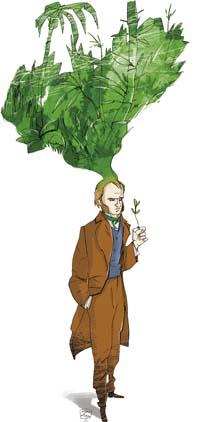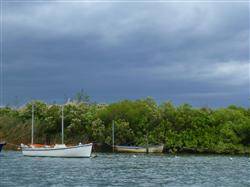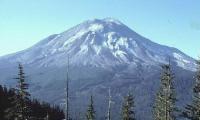A forest of ashes
2011/07/01 Etxebeste Aduriz, Egoitz - Elhuyar Zientzia Iturria: Elhuyar aldizkaria

"I remember it seemed very rare to me," said ecologist Dave Wilkinson of Liverpool's John Moores University, that the first time he was on Ascension Island he was telling the BBC. He specifically referred to the tropical forest of that island: "There were countless plants that never appear together in nature, one another. Then I discovered Darwin's, Hooker's and everything that happened..."
On July 19, 1836 Darwin reached the island of Ascension, in the center of the Atlantic (1,600 km from Africa and 2,250 from South America). He had been traveling around the world for 5 years on the Beagle and were heading home. Ascension was in the hands of the British; there lived few soldiers and sailors and some ex-black slave. Darwin expected a letter. From Cambridge, Dr. John Henslow told him that his journey and his discoveries had a great impact on London and that, when he returned, he would have room among the great scientific men.
With this good news he launched to explore the island of Darwin. He wrote in his observations that the climate was a terrestrial volcanic island. "The living red conical hills, usually flat beaked, rise on a surface of cooked black lava. The central hill of the island seems to be the father of the other smaller cones. It is called Green Hill because of its weak greenish tone, something that is barely perceived from the anchorage. To round off this unfortunate landscape, a wild sea punishes the black rocks of the coast."
There was no trace of the rainforest that Wilkinson would find in 2003. "On the coast nothing grows, a little beyond some cane grass sometimes and a few grasshoppers, authentic friends of the desert. In the central hills, a little grass, like the worst areas of the Welsh mountains... There is no tree on the island. In that sense, and of everyone else, it is much less than Saint Helena." In fact, Darwin came from the island of Saint Helena and recalled the words of its inhabitants: "We know we live on a rock, but the poor of the Ascension live on a pile of ashes." Darwin agreed with those words.
Ascension was a strategic point for the British. Originally on the adjoining island of St. Helena, they hosted the island for the custody of the exiled Napoleons, fearful that Napoleon's followers would stop using Ascensio to help him escape. But it remained an interesting season for ships crossing the Atlantic.
Strategic yes, but it was not a comfortable place to live. And the main drawback to the growth of this detachment was water scarcity. Darwin was fascinated to see how well the island's natural sources took advantage of. From the Green Hill to the coast the water was carried through the tubes and managed very rigorously, "a drop was not wasted," said Darwin. However, water was very scarce. The island was hit by the dry air of the African area and, without vegetation, the scarce rain it made evaporated quickly.
In Darwin's head he began to create a plan. He thought that in that desert a green oasis could be created. And he knew the right person to carry out that plan: his friend Joseph Hooker, botanist, and, like Darwin, the brave explorer.
Seven years later, Hooker Ascension was back from an Antarctic expedition. And recalling Darwin's suggestions, he launched a plan to match the island. The idea was simple: they would plant trees that would trap moisture, prevent evaporation and recover those desert soils.
With the help of the Kew Botanical Garden in London, led by Hooker's father, tree and shrub boats began to arrive at the Ascension. At first every month and from 1850 twice a year; in November from England and in May from the Cape of Good Hope (South Africa).
By 1870, Green Hill had abundant vegetation: eucalyptus, pine, bamboo and banana trees grew abundantly. The notes that the British biologist Alister Hardy wrote in 1920 about the island have nothing to do with those that Darwin wrote: "There are long eucalyptus on the roadsides, flowering shrubs, conifers, palm trees of all kinds, grazing sheep in meadows between enclosed forest areas."
Today, Wilkinson describes Green Hill vegetation as a "cloud forest." The jungle captures the water that evaporates from the sea forming a humid oasis. It is a very special jungle, since it is totally artificial. Wilkinson feels "exciting." In fact, this type of ecosystem is due to the coevolution of species over millions of years. For their part, in Ascension they managed to create in a few decades a sustainable ecosystem capable of advancing by itself.

Gai honi buruzko eduki gehiago
Elhuyarrek garatutako teknologia





